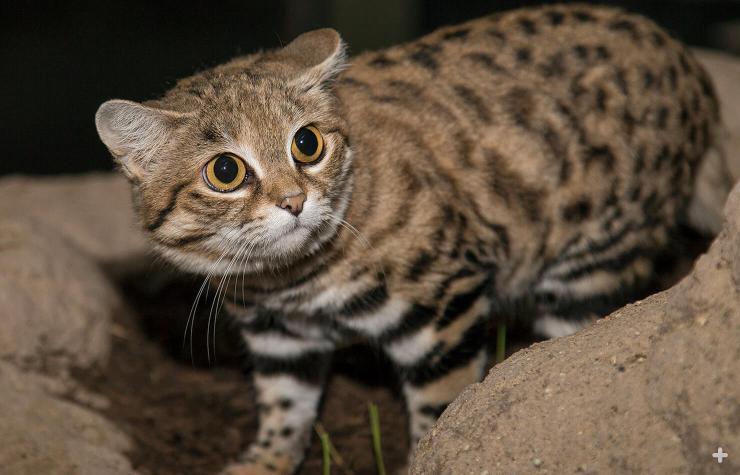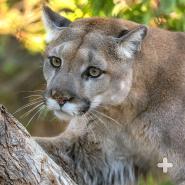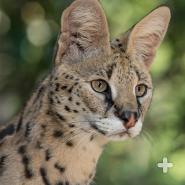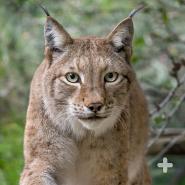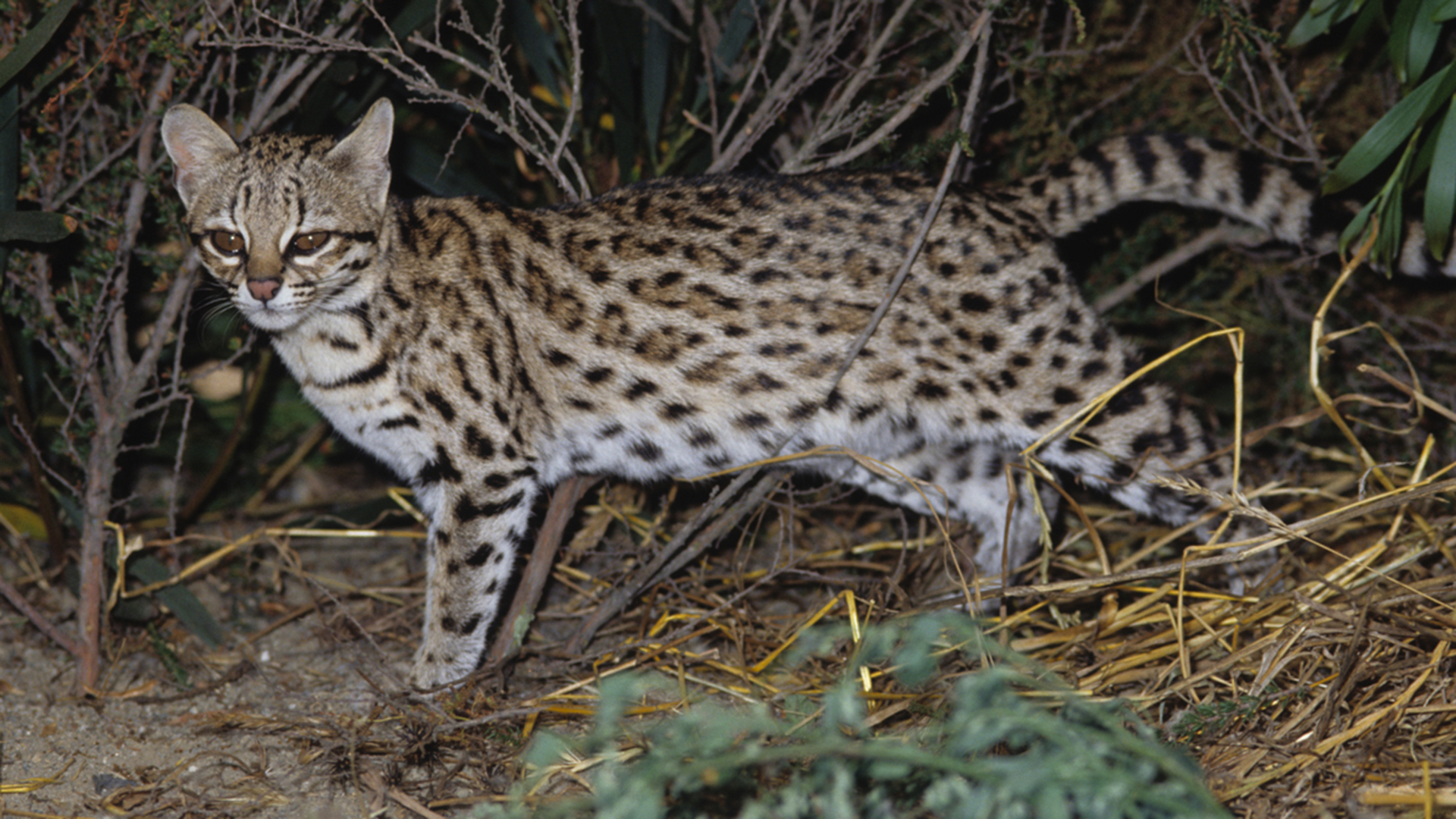
Small Cat

- CLASS: Mammalia (Mammals)
- ORDER: Carnivora
- FAMILY: Felidae
- GENERA: 13
- SPECIES: 29 to 32

ABOUT
The mystery of the small cat: Like the unicorn, small cats have been the stuff of legends. Many of these cats have never been studied in their natural habitats, which are often in rugged, remote areas. Some small cats are active only at night, making it hard for conservation scientists to study them. Until recently, the bay cat of Borneo was known to exist only in stories and identified by a few skins in museums; it was not studied in its native habitat until the late 1990s! There are reports of a cat known only as the onza, from Mexico, which may be related to the mountain lion. It is as big as a mountain lion but more slender. Scientists have only seen one, which had been killed by hunters.
There is also the Iriomote cat (named for the small Japanese island near Taiwan where it lives), which was only discovered by scientists in 1965. It has been declared a national treasure by the government of Japan, but there may be fewer than 100 of these cats left. And have you ever heard of the kodkod? Only people who really know small cats can say they have, and almost nothing is known about this cat, native to a small area of Chile and Argentina.
Surprisingly, some of the "small cats” are rather large, like the mountain lion (sometimes called a puma or cougar), which most people think of as one of the big cats (the Pantherinae). Zoologists group cats by molecular data, DNA, and certain physical features, not really by size. Here are some general guidelines for distinguishing the difference between the two groups of cats:
Roar or purr? Small cats cannot roar like big cats do, because their larynx isn't deep enough in their throat. Instead, they mew, scream, and growl. Anyone with a house cat knows that small cats can purr nonstop whether they are breathing in or out. (Big cats can’t purr at all; their vocal folds are too thick and fleshy.)
Eyes: The pupils of most small cats close to a vertical slit, while the pupils of big cats close to a circle, like a human’s pupil.
Nose: Small cats have a strip of leathery skin across the top of their nose, directly above the wet tip. On big cats, this area is covered with fur.
Posture: Big cats prefer to stretch out when they rest and lie on their belly to eat. Small cats usually eat from a crouching position, and they like to rest curled up, with their paws tucked underneath and their tail wrapped around their body.
Why are house cats tame? At some point in time—many think it started in Egypt about 4,000 years ago—people started feeding and taming cats in their part of the world, and the cats got used to living with people. Over a long period of time, these cats bred among each other and became separate from other populations. They also moved with humans to many parts of the world. This process—called domestication—has also happened with other wildlife, such as dogs, cattle, horses, and pigs.
HABITAT AND DIET
Small cats, big family: Small cats are found in habitats ranging from icy mountains to steamy tropical jungles to scorching deserts. The only places they are not native to are Australia, its surrounding islands, and Antarctica.
Living in such a variety of habitats, these cats have many different ways to survive and hunt for food. The fishing cat has webbed toes and is a good swimmer. It catches prey on land and in the water. The sand cat of North Africa and the Middle East survives in a land with very little water by hunting at night and sleeping and keeping cool during the day. The long legs of the stately serval allow it to make spectacular leaps into the air to catch birds in flight.
In contrast, the short, thick legs of the mountain-dwelling Pallas’s cat allow it to climb easily on rocky slopes. In the tropical rainforests of South America, the spotted margay and the tiny oncilla are able to share their habitat because the margay hunts in trees and the oncilla hunts on the ground.
All cats have keen senses, which they use to locate and stalk their prey. Like us, cats have forward-facing eyes. But they can open their pupils three times wider and see in the dark six times better than people can. Cats have a layer of tissue in their eyes called the tapetum lucidum, which bounces light back through the retina a second time and increases the amount of light the cat has to see by. That’s what causes the “eyeshine” that you see with cats at night, when their eyes seem to glow red or green.
Cats can also focus clearly and quickly for long and short distances. Without moving their heads, they can detect movement within a visual field of 280 degrees—which means they can see out of the corner of their eyes a lot better than we can!
Hearing is another important sense for a cat. More than 20 muscles control each ear, and the ears move independently of each other, so one can be pointed forward while the other is pointed back. The cat’s ears can quickly turn to catch sounds in all directions, including those behind the cat. Cats can hear the ultrasonic noises that small prey, like rodents, make, which are beyond our hearing range.
Eyes and ears aren’t a cat’s only tools; it also has very sensitive whiskers, called vibrissae, on the lips, cheeks, chin, eyebrows, and forelegs that give the cat information about the environment. The whiskers are deeply embedded in the skin and connected to nerve endings that transmit information to the brain, so a cat can feel its way as it moves. This allows the cat to "read” air currents and the locations of obstacles and items around it, like grass and branches, in order to stalk almost silently. When capturing prey, such as rabbits, rodents, birds, or fish, the whiskers around the face all point forward like a net to detect exactly where the prey is and where it might go.
Cats walk on their toes. Their claws are retractable and do not come in contact with the ground. Their teeth are not good for grinding, but their sharp-edged incisors, pointed molars, and long, curved canine teeth work like shears to shred their food.
At the San Diego Zoo and the San Diego Zoo Safari Park, most of our small cats are offered commercial cat kibble and a specially formulated carnivore diet as well as thawed mice and bones. In addition, our mountain lions receive large bones and sometimes parts of carcasses, while our fishing cats are occasionally given goldfish to catch.
FAMILY LIFE
Raising kittens: Small cats are solitary, so an adult female cat uses scent marking and vocalizing to advertise her availability during her estrous cycle. Just before birth, she finds a safe spot for her kittens. This can be a cave, tree hollow, space under a large tree’s roots, or even a depression in tall grass. Kittens are born with their eyes sealed and very little hair to keep them warm. When the mother leaves them to hunt for food, the kittens are quite vulnerable to predators, including male cats.
The kittens quickly learn to eat solid food, often times before they can walk. They are usually weaned by about seven weeks of age. As they grow, their mother teaches them hunting skills, stalking and chasing small prey. She does this by bringing live prey to the kittens to practice with. Upon reaching maturity, the young adults strike out on their own, ready to face the world.
CONSERVATION
Cats in decline: Small cats’ numbers are getting smaller, and conservation scientists believe there are two reasons for this decline:
Fur trade: Since the penalties for hunting big cats have increased, people have begun hunting the small, spotted cats for their fur. Coats made from cat fur are still popular in parts of Europe and Asia. Since small cats have smaller skins, as many as 25 cats must be killed to make one fur coat. Like their larger cousins, small cats can be helped if people stop wearing their fur.
Loss of habitat: The other threat to the survival of small cats is loss of their habitat due to development of towns, cities, and farms. When people move into their habitat, small cats are often viewed as a threat to pets, livestock, or humans, and so they are killed. We can protect small cats by preserving their habitat and by learning to live with them. Keep in mind that they are important predators that control populations of potential pests like rodents.
The black-footed cat has a limited range in southern Africa and has received very little attention by the conservation community. San Diego Zoo Global is part of the Black-footed Cat Working Group and has taken a leading role in identifying a disease that may threaten fragile black-footed cat populations. Trail cameras and radio collars are used to learn more about the little felids. Biological samples collected from black-footed cats are stored in our Wildlife Biodiversity Bank and provide a long-term source of genetic material for studies into conservation genetics.
By supporting San Diego Zoo Wildlife Alliance, you are our ally in saving and protecting wildlife worldwide.
LIFE SPAN
10 to 30 years, depending on species
YOUNG
Gestation: two to three months, depending on species
Number of young at birth: one to six
Weight at birth: 1.4 to 15.7 ounces (39 to 450 grams), depending on species
Age of maturity: six months to three years, depending on species
SIZE
Length:
Largest — mountain lion Puma concolor, head and body 3 to 6.3 feet (1 to 2 meters) long
Smallest — black-footed cat Felis nigripes and rusty-spotted cat Prionailurus rubifinosa, head and body 13 to 19.5 inches (34 to 50 centimeters) long
Weight
Heaviest — mountain lion, 79 to 227 pounds (36 to 103 kilograms)
Lightest — rusty-spotted cat, 2.4 to 3.5 pounds (1.1 to 1.6 kilograms)
FUN FACTS
The African wild cat is thought to be the ancestor of today’s domestic house cat. The earliest evidence of domestic cats was found in a 4,000-year-old tomb in Egypt. It contained 17 cat skeletons, each with a pot of milk for the afterlife.
Margays can run headfirst down a tree trunk like a squirrel and even hang upside down by their feet from branches.
Not all small cats hate water. The leopard cat, fishing cat, flat-headed cat, and Geoffroy’s cat all swim and hunt for amphibians and fish in streams and rivers.
The caracal can jump 6 feet (1.8 meters) straight up to knock a bird out of the air, even twisting nimbly to catch another bird on the other side before coming down to the ground.
Nicknamed "the tiger of the termite mound,” the black-footed cat of Africa digs in the sand to find insects and spiders, which it eats in addition to rodents.
Cat tongues are rough because they are covered with rows of rough bumps, called papillae, to scrape hair off hides and meat off bones. The papillae also help hold water on the tongue when the cat drinks.


